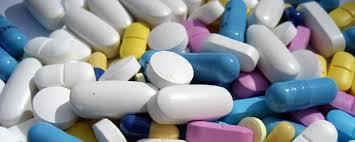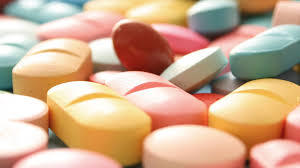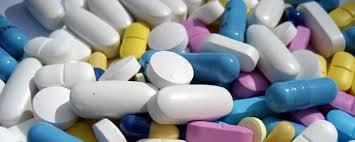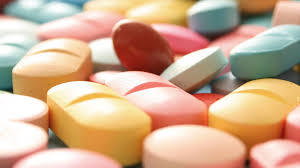
Citicoline & Piracetam Tablet
72 INR/Box
Product Details:
- Purity 98%
- Formulations Type General Drugs
- Formulations Form Tablets
- Gender/Age Group Adult
- Storage Instructions Dry Place
- Click to view more
X
Citicoline & Piracetam Tablet Price And Quantity
- 72 INR/Box
- 300 Bottle
Citicoline & Piracetam Tablet Product Specifications
- Dry Place
- 98%
- Tablets
- Adult
- General Drugs
Citicoline & Piracetam Tablet Trade Information
- Cash in Advance (CID) Cash Advance (CA)
- 300 Bottle Per Month
- 1 Months
- Yes
- Sample costs shipping and taxes has to be paid by the buyer
- Australia Middle East Central America South America Western Europe Asia Eastern Europe North America Africa
- All India
Product Description
Citicoline and Piracetam combination is a physician formulated, science-based brain-health supplement designed to supply the essential antioxidants and nutrients necessary to assist the body in supporting healthy memory, mood and motor functions. It nutritionally supports healthy brain oxygenation, blood flow, immune system defense, and cell membrane structure. In addition, it also nutritionally supports cell-to-cell communication which is crucial to healthy cognitive function.Citicoline has been shown to improve memory and other cognitive functions in patients with chronic cerebrovascular disease or dementia and in old people suffering from memory deficit. Piracetam is a drug which enhances cognition and memory, slows brain aging, increases oxygen and blood flow to the brain, improves Alzheimer's and aids in stroke recovery and related conditions.
Piracetam and citicoline stimulate thought without peripheral nervous system stimulation. The combination is generally prescribed for memory enhancement, neurological and cognitive disorder, Parkinsonism and Alzheimer disorder. These drugs are nutrients and acts as cognition enhancing supplements, and are recommended as part of treatment regimens at some aging clinics.
Indications:
Neuroprotective Effect
Improves learning and Memory performance
For cerebral trauma
For treatment of senile cognitive impairment
Enhancement of cognitive function of brain
Improves mental performance in Alzheimer's disease
Neurological and cognitive disorder
Depression and anxiety stroke
Closed craniocerebral trauma
Mechanism of Action:
Piracetam:
Piracetam, the prototype of the so-called "nootropic drugs" is used since many years in different countries to treat cognitive impairment in aging and dementia. Piracetam has been shown to alter the physical properties of the plasma membrane by increasing its fluidity and by protecting the cell against hypoxia. It increases red cell deformability and normalizes aggregation of hyperactive platelets. Piracetam is an agent with antithrombotic, neuroprotective and rheological properties. Treatment with piracetam improves learning, memory, brain metabolism, and capacity. The drug influences neuronal and vascular functions and influences cognitive function without acting as a sedative or stimulant.
Citicoline:
Citicoline activates biosynthesis of structural phospholipids of neuronal membranes, increases brain metabolism, and acts upon the levels of different neurotransmitters. A number of therapeutic actions of citicoline are indicated which are as follows:
A neuroprotective effect in hypoxic and ischemic conditions, decreasing the volume of ischemic lesion
Improves learning and memory performance in brain aging
Restores the activity of mitochondrial ATPase and membrane Na+/K+ATPase
Inhibits activation of certain phospholipases and accelerates reabsorption of cerebral edema
Inhibits mechanisms of apoptosis associated to cerebral ischemia.
Piracetam and citicoline works by affecting certain chemicals in the brain. It is used to treat myoclonus.
It binds with glutamate receptors and therefore reduce the levels of the neurotransmitter glutamate in the brain as well as the glutamate/GABA ratio. Under certain conditions, glutamate acts as a toxin and may be involved in neurodegenerative disorders, such as Alzheimer's disease.
It seems to increase blood flow, which could explain why it helps people who've hadstrokes.
Piracetam might make cell membranes more fluid, allowing neurotransmitters to move from neuron to neuron more rapidly.
It seems to make it easier for information to move from one hemisphere of the brain to the other, which could explain why it speeds up reaction times.
It appears to protect brain cells from damage caused by low oxygen levels.
It also seems to modulate protein synthesis, which is necessary for forming long-term memories.
It increases the production of the neurotransmitter acetylcholine, which plays an important role in learning and memory.
Pharmacokinetics:
Piracetam:
The drug interaction potential resulting in changes of piracetam pharmacokinetics is expected to be low because approximately 90% of the dose of piracetam is excreted in the urine as unchanged drug. In vitro, piracetam does not inhibit the human liver cytochrome P450 isoforms CYP 1A2, 2B6, 2C8, 2C9, 2C19, 2D6, 2E1 and 4A9.
Citicoline:
Citicoline is water-soluble, with more than 90% oral bioavailability. Plasma levels peak one hour after oral ingestion, and a majority of the citicoline is excreted as CO2 in respiration, and again 24 hours after ingestion, where the remaining citicoline is excreted through urine.
Contraindications:
Hypersensitivity to piracetam or other pyrrolidone derivatives.
Not to be taken patients with cerebral haemorrhage.
Contraindicated in End Stage Renal Disease patients.
Should not be used in patients suffering from Huntington's Chorea.
Drug Interactions:
Usually drug interactions occur when it is taken with another drug or with food. Before you take a medication for a particular ailment, you should inform the health expert about intake of any other medications including non-prescription medications. Citicoline must not be use with medicines containing meclophenoxate (or centrophenoxine). Citicoline increase the effects of L-dopa.
Adverse Effects:
Insomnia
Diarrhea
Changes in blood pressure
Increase in body weight
Tell us about your requirement

Price:
Quantity
Select Unit
- 50
- 100
- 200
- 250
- 500
- 1000+
Additional detail
Mobile number
Email







